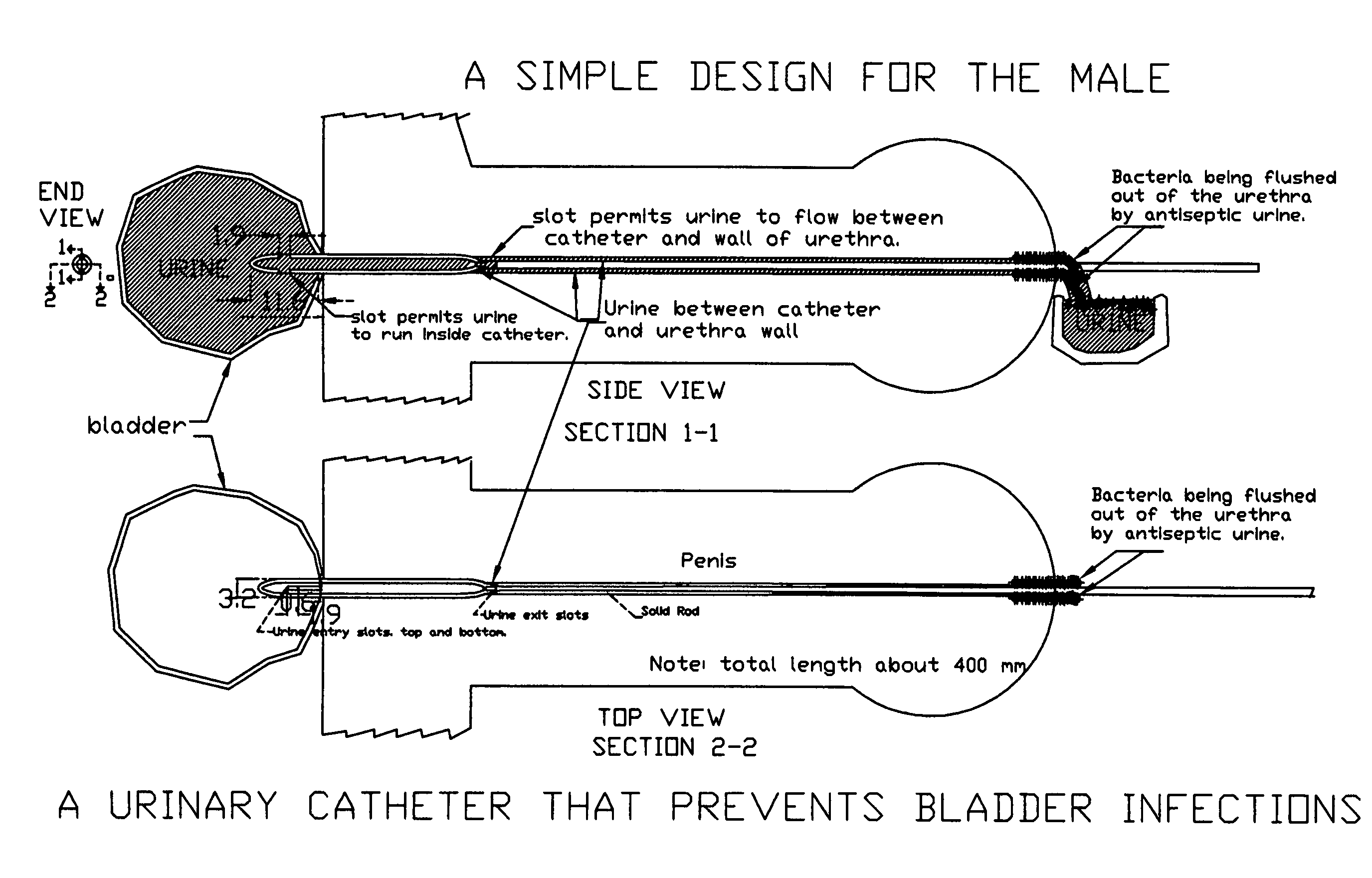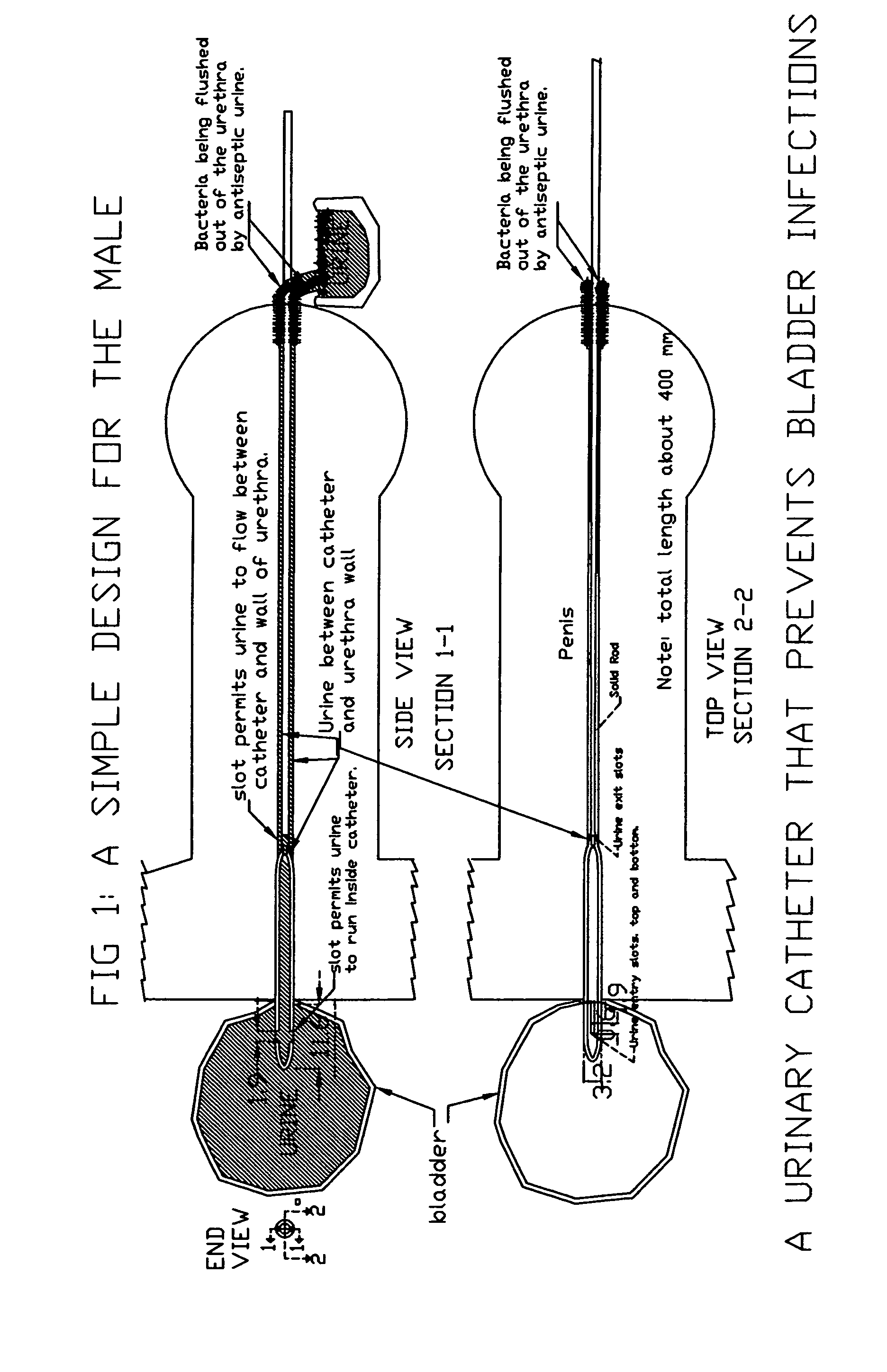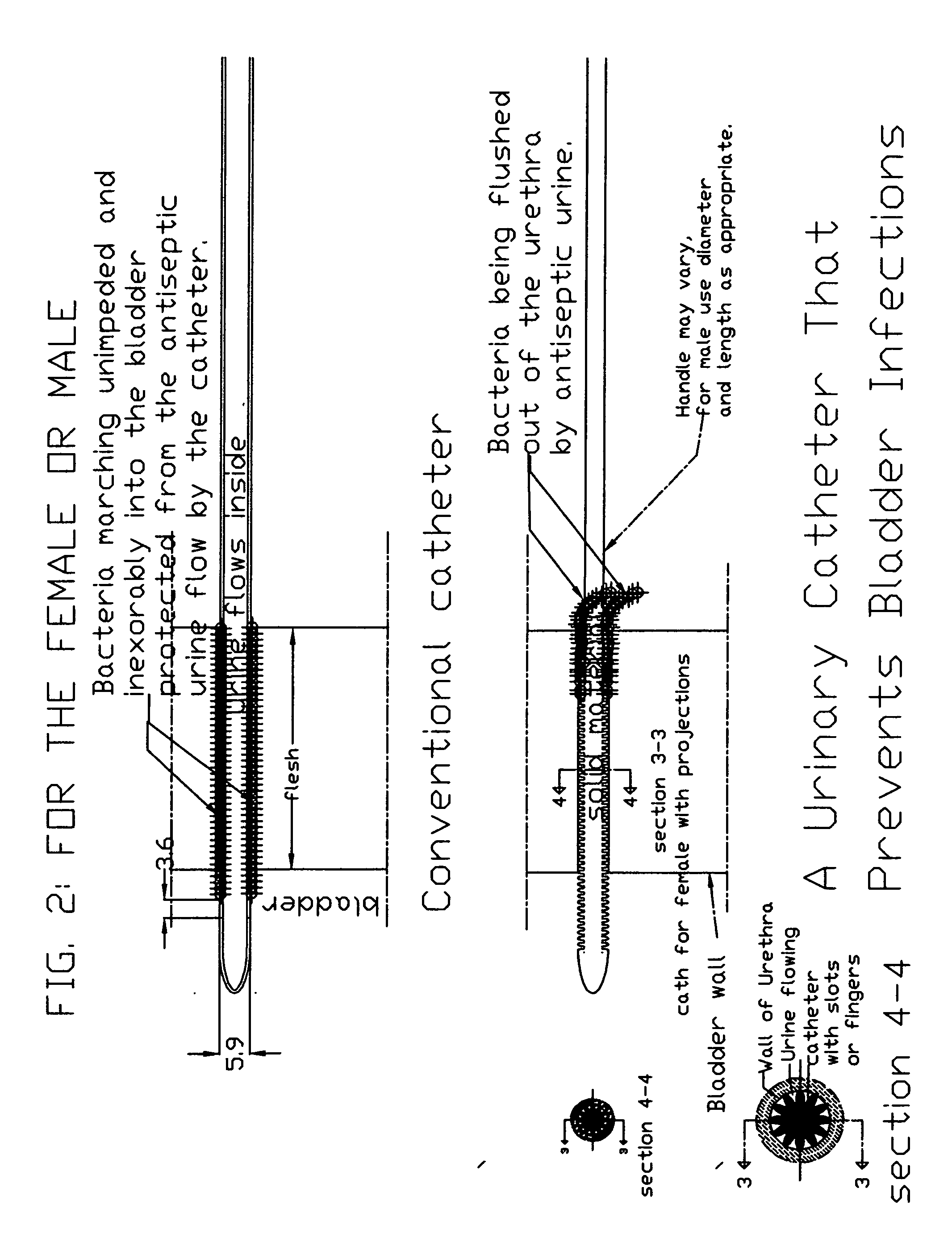Urinary catheter that prevents bladder infections
a technology of urination catheter and bladder, which is applied in the direction of balloon catheter, suction device, wound drain, etc., can solve the problems of long and expensive battle for catheter users, fatal infection, and inevitable bladder infections
- Summary
- Abstract
- Description
- Claims
- Application Information
AI Technical Summary
Benefits of technology
Problems solved by technology
Method used
Image
Examples
Embodiment Construction
1. A Simple Design for the Male
[0014]See FIG. 1: Design 1: A Simple Design for the Male.
[0015]The male urethral canal in the penis is ribbon shaped and of spongy tissue, not muscle. The catheter proposed has a hollow head section about 2 inches long, streamlined front and back for ease of entry and withdrawal. This head is attached to a thin shaft. The head has holes fore and aft to permit urine to flow through it. The pressure from the bladder is normally sufficient to dilate the urethra in the penis and allow urine to pass. This is what happens in normal urination. For this to occur using a catheter, the shaft must be small in diameter, (about 3 mm) so as not to dilate and stretch the urethra and prevent the urine from flowing. The shaft needs to be stiff enough to push the head through the sphincter, but soft and large enough to perform without any damage to the urethra. This design would allow most of the length of the urethra to be periodically washed down, preventing bacteria ...
PUM
 Login to View More
Login to View More Abstract
Description
Claims
Application Information
 Login to View More
Login to View More - R&D
- Intellectual Property
- Life Sciences
- Materials
- Tech Scout
- Unparalleled Data Quality
- Higher Quality Content
- 60% Fewer Hallucinations
Browse by: Latest US Patents, China's latest patents, Technical Efficacy Thesaurus, Application Domain, Technology Topic, Popular Technical Reports.
© 2025 PatSnap. All rights reserved.Legal|Privacy policy|Modern Slavery Act Transparency Statement|Sitemap|About US| Contact US: help@patsnap.com



